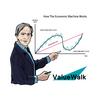Improving TCA With Vectorization

Transaction Cost Analysis (TCA) in capital markets refers to a comprehensive evaluation of all costs associated with executing a trade. This analysis takes into account not just the direct costs of the trade (such as the spread or commissions), but also indirect costs such as market impact, liquidity costs, and opportunity costs.
The goal of TCA is to provide a more accurate picture of the actual cost of a trade for both regulators and traders.
Q4 2022 hedge fund letters, conferences and more
When calculating Transaction Cost Analysis (TCA) metrics, there are two types of metrics that can be used: individual trade metrics and rollup metrics. Metrics at the individual trade level provide detailed information about each trade, including its execution price, size, and the time it was executed.
Rollup metrics are summary statistics that aggregate trade-level data across a specified time period or across multiple trades. Rollup metrics provide a high-level overview of trading performance, allowing traders to quickly identify trends and patterns in their execution.
Examples of rollup metrics include VWAP (Volume-Weighted Average Price), Implementation Shortfall, and Arrival Price. These comparative metrics can be used to evaluate and improve performance across trading desks.
Calculating TCA
Calculating TCA rollup metrics on continuously changing trade data can be technically challenging, especially when it comes to issues related to latency, high cardinality joins, and operationalizing insights in near real-time due to latency.
Essentially the challenges make it difficult to get insights in a timely manner, meaning significant amounts of money are left on the table. Not making progress towards making the right trade at the right time. There are also compliance requirements that may be at risk.
In this article, Nima will delve into these challenges and explain why banks and hedge funds are learning that traditional approaches for calculating TCA rollup metrics are not timely and agile enough despite extensive investments.
This article will discuss a concept called native vectorized database architecture that is driving differentiated TCA applications by banks like Citi and hedge funds like Point 72 that involve high cardinality joins and time series windowing functions due to its ability to handle complex data operations with low latency.
The vectorized architecture requires less tuning and up-front data engineering, thereby improving developer productivity and making it easier to implement and iterate on TCA rollup metrics. Investors will learn they can perform accurate and efficient TCA rollup calculations, allowing them to make informed decisions and optimize their trading strategies.
Source valuewalk






